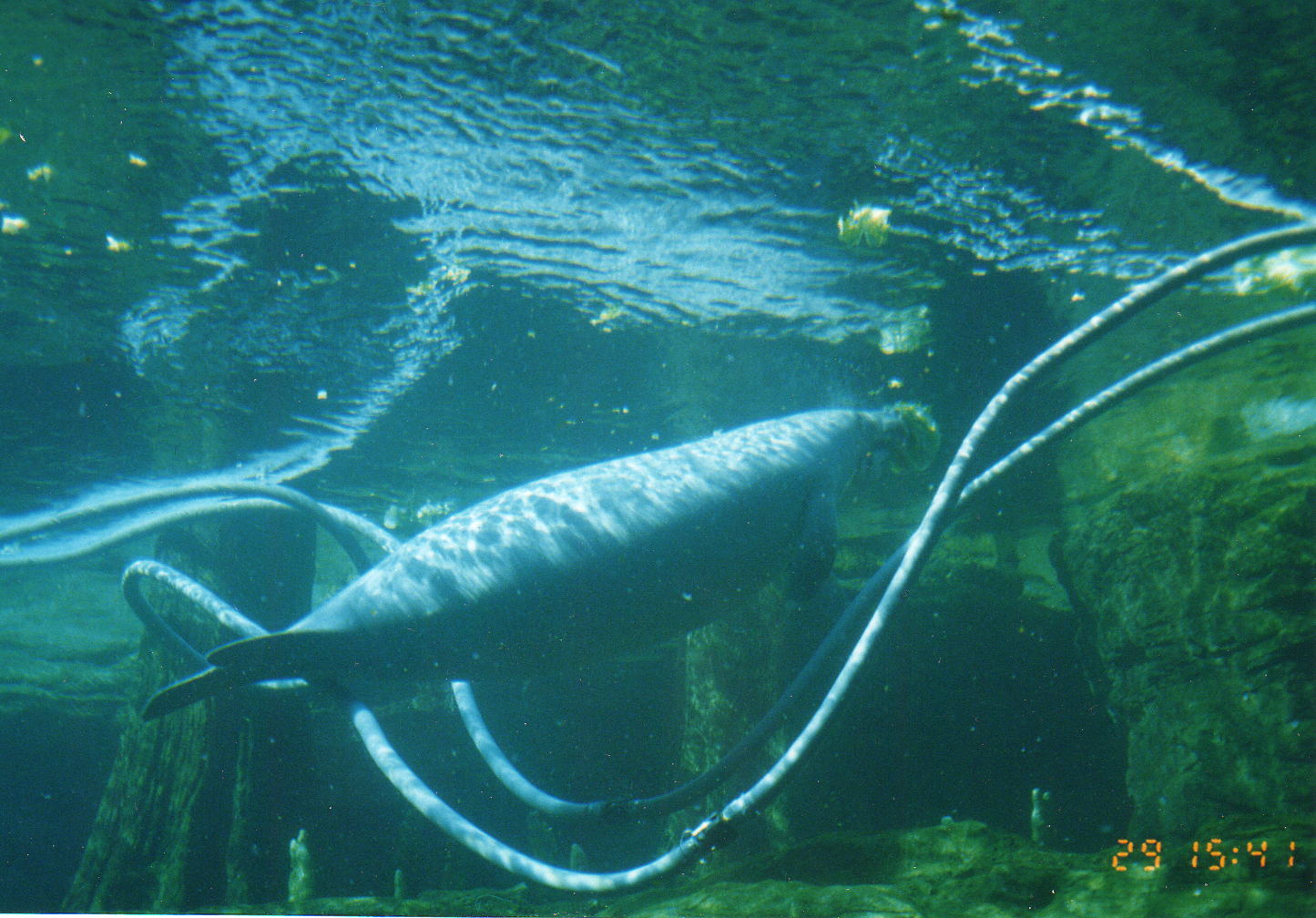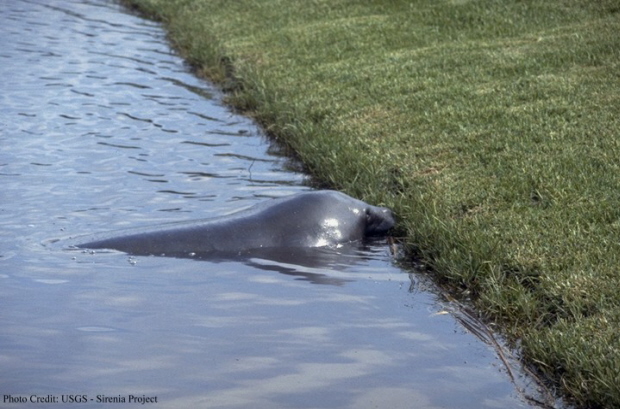|
 West
Indian Manatees are aquatic herbivores, that feed throughout the entire
water column including the surface. They are very flexible
feeders. West
Indian Manatees are aquatic herbivores, that feed throughout the entire
water column including the surface. They are very flexible
feeders.
The West Indian manatee has
a downward-sloping snout, which allows it to feed on plants near the ground.
They spend
roughly five to eight hours a day grazing. They have extremely large
appetites which enables them to eat up to 11 percent of their body
weight. Although West Indian Manatee are herbivores they are not obligate
herbivores and will consume fish and invertebrates in some areas if
available.
 The typical diet consists of a variety of marine and
freshwater vascular plants and algae. As well as terrestrial
plants they may be able to reach on the shoreline. The typical diet consists of a variety of marine and
freshwater vascular plants and algae. As well as terrestrial
plants they may be able to reach on the shoreline.
The West Indian manatee
exhibits many adaptations for aquatic herbivory. Their large body
size, large dexterous forelimbs, used for manipulating food, walking
along the bottom, and large prehensile lips mounted with bristles.
The teeth are very unique. They have
molars that continually progress forward. The worn out teeth fall
out of the anterior row and new teeth form throughout life. Their
teeth are adapted for their abrasive diet. The West Indian manatee
typically will feed at night. They also must surface every 15-20
minutes to breathe.
 Although
West Indian Manatees occupy estuarine and marine habitats, they require freshwater to drink.
In estuarine and marine habitats manatees are often seen drinking from
freshwater sources, such as industrial or sewage outfalls, and water
hoses. Although
West Indian Manatees occupy estuarine and marine habitats, they require freshwater to drink.
In estuarine and marine habitats manatees are often seen drinking from
freshwater sources, such as industrial or sewage outfalls, and water
hoses.
|
